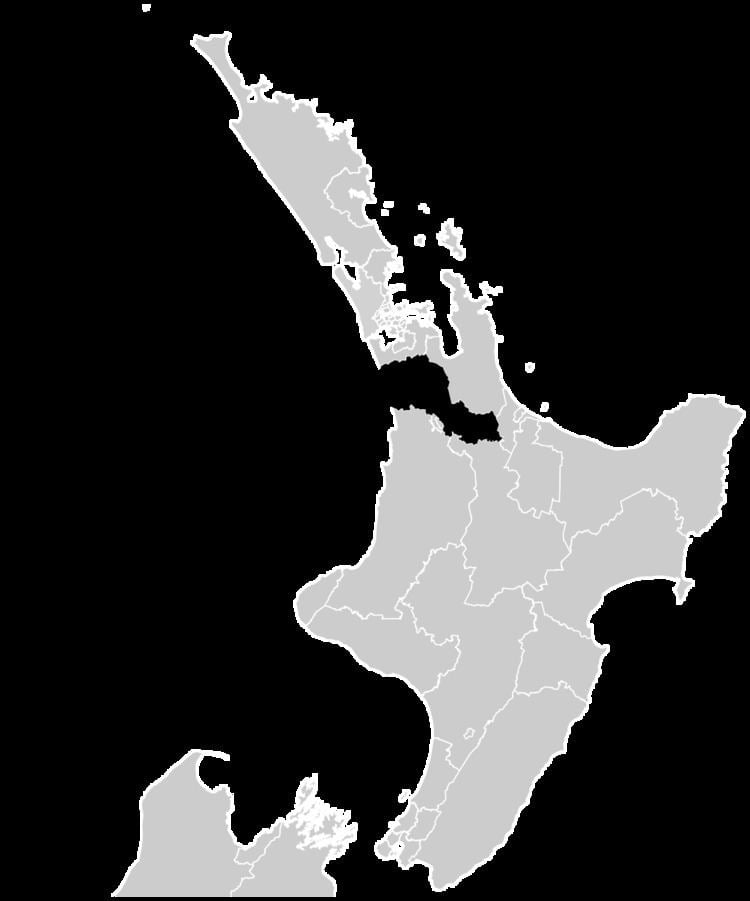 | ||
Waikato is the name of a current electorate in the New Zealand Parliament. The electorate first existed from 1871 to 1963, and then from 1969 to 1996 when MMP was introduced. The current electorate was re-established for the 2008 election and has since then been represented by Lindsay Tisch for the National Party.
Contents
Population centres
Through an amendment in the Electoral Act in 1965, the number of electorates in the South Island was fixed at 25, an increase of one since the 1962 electoral redistribution. It was accepted that through the more rapid population growth in the North Island, the number of its electorates would continue to increase, and to keep proportionality, three new electorates were allowed for in the 1967 electoral redistribution for the next election. In the North Island, five electorates were newly created and one electorate was reconstituted (Waikato) while three electorates were abolished. In the South Island, three electorates were newly created and one electorate was reconstituted while three electorates were abolished. The overall effect of the required changes was highly disruptive to existing electorates, with all but three electorates having their boundaries altered. These changes came into effect with the 1969 election.
The electorate was recreated after the 2006 census, as the successor to the former Piako electorate. Piako has been pulled north to account for changes both in Auckland (where population growth has pulled the boundary of Port Waikato around the Waikato River), and in the central North Island, where several electorates went into the boundary review under quota, forcing their boundaries further north. It has lost the towns of Te Aroha to Coromandel and Cambridge to Taupō, and in exchange gained the rural and semi-urban areas around Hamilton East, and Huntly, Te Kauwhata and Meremere from Port Waikato.
History
The Waikato electorate was first contested in the 1871 election. James McPherson was elected, but he resigned again on 20 December 1871. William Jackson won the resulting 1872 by-election (held on 1 March). He retired at the end of the parliamentary term in 1875. Frederick Whitaker won the 5 January 1876 election. In the 1879 election, Whitaker contested the Eden electorate but was beaten by Joseph Tole.
The Waikato electorate was won by John Blair Whyte in the 1879 election, who served for eleven years until 1890 when he retired. Whyte was appointed to the Legislative Council in the following year. John Bryce, who first became an MHR (Member of the House of Representatives) during the 4th Parliament, succeeded Whyte in the 1890 election, but he resigned in the following year. The resulting 1891 by-election was won by Edward Lake, who retired at the end of the parliamentary term in 1893.
The 1893 election was won by Alfred Cadman for the Liberal Party, who had been an MP in various electorates since 1881. At the next election in 1896, Cadman successfully contested the Ohinemuri electorate. The Waikato electorate was won by Frederic Lang in 1896, who represented the electorate until his defeat by the Liberal Party's Henry Greenslade in the 1905 election. Greenslade held the electorate until 1911, when he was defeated by the Reform candidate Alexander Young.
Young won the subsequent elections in 1914 and 1919. In the 1922 election, he successfully contested the newly formed Hamilton electorate. Young was succeeded by the Liberal candidate Frederick Lye in the Waikato electorate in 1922. At the 1925 election, Lye was defeated by Reform's Daniel Stewart Reid. Lye in turn defeated Reid at the 1928 election, but this time standing for the United Party. The United/Reform Coalition was established just before the 1931 election and Lye was again successful. In the 1935 election, Lye was beaten by Robert Coulter of the Labour Party. Coulter served only one term in Waikato, as he was defeated by the National Party candidate William Goosman in the 1938 election. Goosman also won the 1943 election, but successfully contested the 1946 election in the newly formed Piako electorate.
Goosman was succeeded in Waikato by National's Geoffrey Sim in 1946. Sim held the electorate until it was abolished in 1963, when he contested Piako instead.
The Waikato electorate was re-established in 1969. The first representative was National's Lance Adams-Schneider, who had previously represented the Hamilton electorate. Adams-Schneider retired from Parliament in 1981 and became Ambassador of New Zealand to the United States in the following year. Adams-Schneider was succeeded by National's Simon Upton, who won the 1981 election and started his long parliamentary career with one term in Waikato. Upton contested the Raglan in the 1984 election and was succeeded by National's Rob Storey in Waikato. Storey held the electorate until it was abolished with the introduction of Mixed-member proportional voting in 1996. It was re-established for the 2008 election.
Lindsay Tisch was the MP for Piako from its re-establishment in 2002, and became the MP for Waikato at the 2008 election. Tisch was confirmed in the 2011 election.
In the 20th century Waikato was a safe National Party seat; and three of the five National Party Members of Parliament for Waikato were cabinet ministers.
Members of Parliament
Key
Independent Conservative Liberal Reform United Labour National
List MPs
Members of Parliament elected from party lists in elections where that person also unsuccessfully contested the Waikato electorate. Unless otherwise stated, all MPs terms began and ended at general elections.
2011 election
Electorate (as at 26 November 2011): 42,084
1935 election
Table footnotes:
1931 election
Table footnotes:
